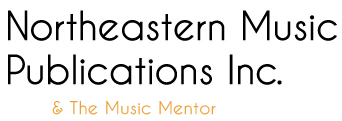MUSIC DIRECTOR'S GUIDE TO
TEACHING BASSOON STUDENTS
By Lawrence J. Stewart, DMA
Bassoon Professor - Rowan University
I am sure many music teachers have asked this question, "I have a student who wants to play the bassoon, but how can I teach such a student? I don't know the bassoon that well?" The intention of this article is to assist music directors in this situation by supplying them with needed information and helpful tips. We certainly need more bassoonists at least at the college and high school level and, hopefully, these suggestions acquired from a lifetime of struggling with bassoon problem will be of help.
I will approach this problem by answering the first questions I would think a music director would have i.e. who should play the bassoon, how do I find good equipment, how do I find good reeds, what pedagogical materials should I use.
Who Should Play the Bassoon?
Most any student can learn to play the bassoon well. A knowledge of bass clef, playing experience on another woodwind instrument (because of the technique of covering tone holes), ability to read music, and having large hands help. However, if a student has none of these qualities, he/she can still play the bassoon.
Probably the most debilitating attribute is not having large enough hands to comfortably cover the tone holes but even that can be overcome. Average sized hands are usually large enough (as I can attest), and several bassoon companies (for example Fox and Polisi) make a plateau key (for the problem third finger of the left hand) just for that purpose.
Therefore, learning to play the bassoon is not as difficult as most people think as long as the equipment is adequate.
How Do I Find Good Instruments?
The secret to owning good instruments is to find a bassoon specialist (performer/teacher) who can evaluate what instruments you already own and/or can provide information where to purchase new instruments. Bassoon specialists can be found by contacting local colleges and universities, looking in the AFT Musicians' Union Book, or by conferring with any jobbing musician.
Student bassoons have vastly improved in quality compared to when I started. At that time, the Heckel bassoon seemed to be the only good quality bassoon made. Today, many companies make quality student bassoons (for example -- Fox, Puchner, Moosman, Polisi, Kohlert, Schreiber, Conn, Adler Sonora, Moennig, Kroner, etc.). Usually the problem with bassoons, whether new or used, is what state of disrepair they are in, and that's where the bassoon specialist comes in. Even new bassoons can be in need of repair.
Contact an active playing bassoonist to check out a new instrument before you buy it and/or to check out a used instrument you may already own. It's amazing how many good bassoons are sitting around in storage closets in disrepair. These bassoons can become first rate quality for a fraction of the cost of a new bassoon. All that's needed is to find a good bassoon repair person.
Notice that I said bassoon repair person not woodwind repair person because not all woodwind people know the intricacies of the bassoon. The bassoon has special problems (such as tuning and adjusting conical tone holes) which require a person to play the instrument well enough to spot these problems. Again, your bassoon specialist will be able to direct you to the best bassoon repair person in your area.
How Do I Find Good Reeds?
To find good quality reeds, use the same process --- contact your bassoon specialist. If the specialist does not make reeds to sell, he/she can tell you where to buy them. At least, the bassoon specialist can play whatever reeds you are presently purchasing and tell you if they are worth using. Unfortunately, my experience has been that bassoon reeds sold in most music stores are not good and are too expensive.
The person I recommend for bassoon repair and for bassoon reeds in my locale is:
Mr. John Shamlian
352 Farwood Avenue
Haddonfield, New Jersey 08033
Phone: 609-429-1453
John, a bassoonist and now retired from the Philadelphia Orchestra, presently repairs bassoons and makes reeds full time. There is probably a comparable person in your area. Just ask around.
What Pedagogical Materials Should I Use?
For teaching the bassoon, most standard method book materials will work. The Rubank Method, the Belwin Band Builder, and Yamaha come to mind. Unfortunately, many standard method books have inadequate fingering charts and relatively no explanation of how to play the bassoon.
One book I recommend for students who are transferring from other instruments is:
Primary Handbook for Bassoon - Polonchak
Meredith Music Publishing
170 NE 33rd Street
P.O. Box 24330
Fort Lauderdale, Florida 33307
This booklet is an excellent source for the basic techniques of playing the bassoon. It has an excellent fingering chart, a good section on reeds, a section on how to form the correct embouchure, a list of graded solo literature, a section on the correct performance posture, etc. In other words, it has the information most method books don't provide and is a must buy especially for a nonbassoonist.
For private bassoon teaching, the method book which has become the bible for bassoonists is:
Practical Method for the Bassoon - Julius Weissenborn
Carl Fischer Publisher
New York, NY
This method book is excellent because of the proper rate of progression of pertinent and excellent materials. The Weissenborn book is a good method book for bassoonists to teach from, but nonbassoonists should use the Pence booklet as a supplement to the Weissenborn book.
I hope these suggestions will prove helpful. I would be happy to be of assistance to you in any way I can. You may contact me at:
Music Department
Rowan University
Glassboro, New Jersey 08028
609-256-4500 extension 3713
To receive The Whisper Key, a newsletter on bassoon playing and teaching, contact Dr. Stewart at Rowan University.
Watch for Future Issues:
- How to put the instrument together without having to send it to the repair shop.
- Embouchure.
- And much more.



